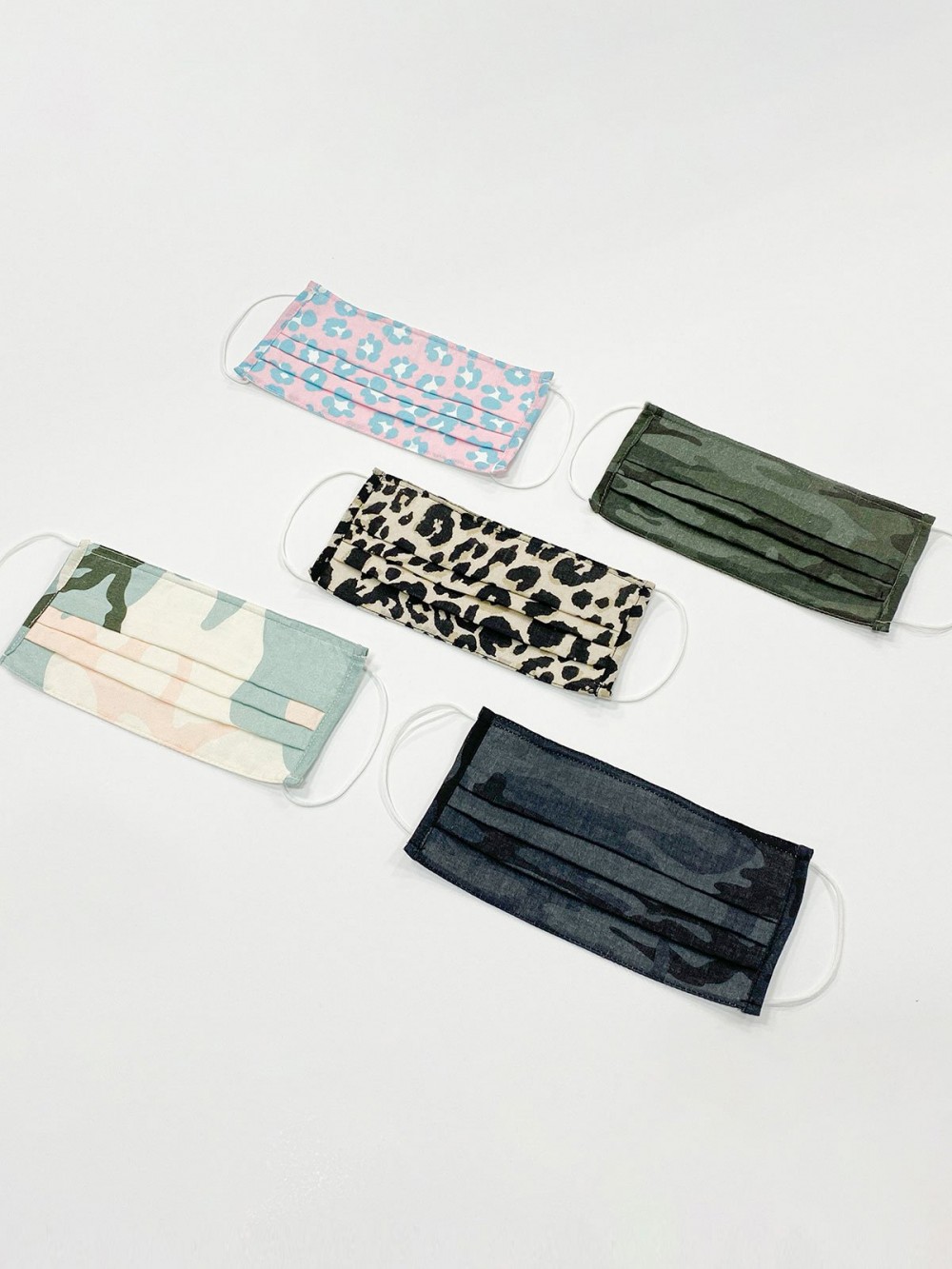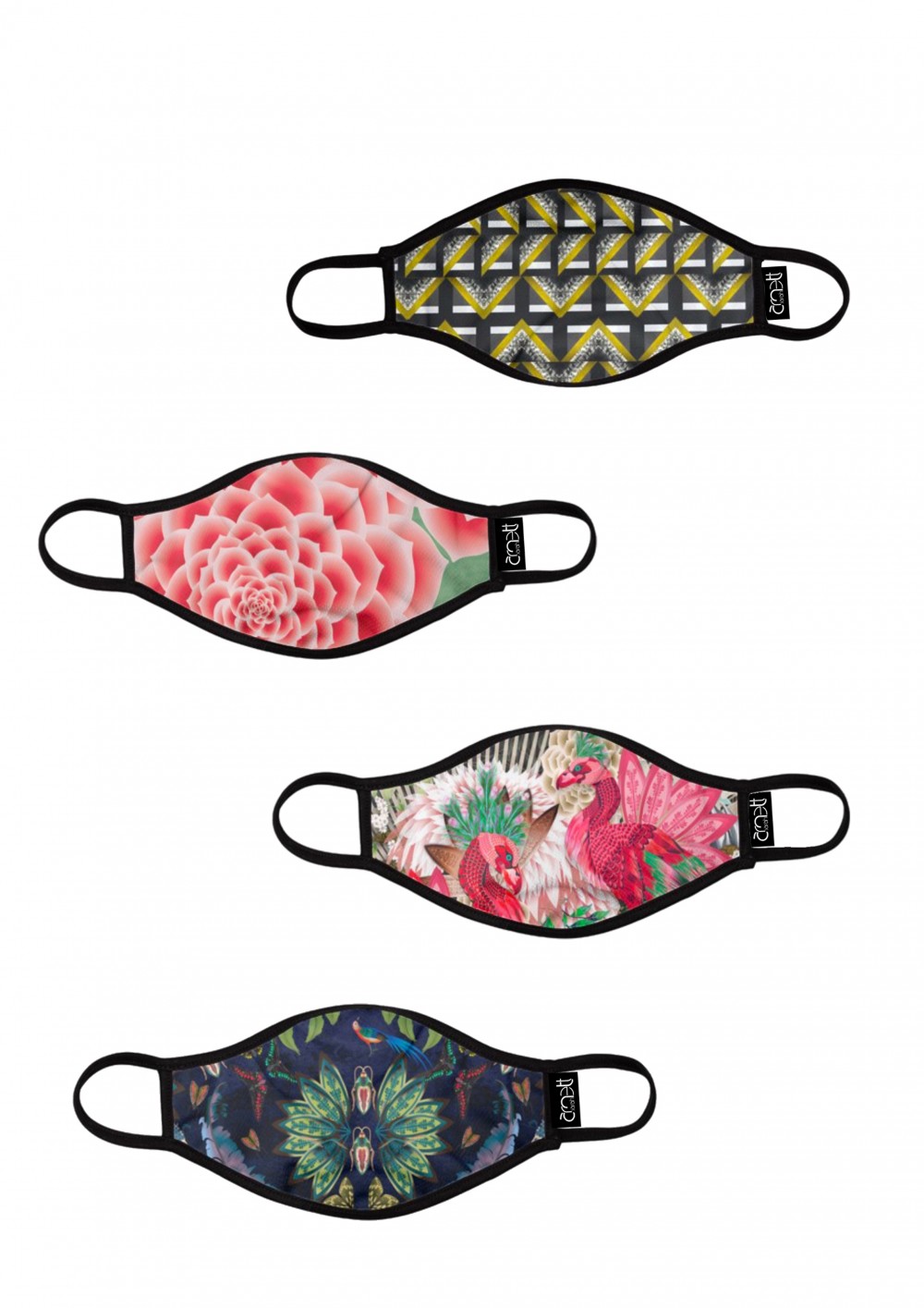Where to buy and how to make fabric face masks

A Della Dress facemask
For many, wearing a face mask in public has already become a reality. Face protection is regularly worn in the Far East where countries have previous experience of Coronaviruses. While in Europe: France, Germany, Spain and parts of Italy have included masks as part of their lockdown exit plans. After months of uncertainty, this week, the government finally advised the public to ‘wear a face covering in enclosed spaces where social distancing is not always possible and they come into contact with others that they do not normally meet, for example on public transport or in some shops.’ Like many others, I’ve been confused, conflicted and unmasked over the last few weeks, but will be following this advice and covering up when on the food shop from now on. To be honest, after a couple of frustrating ‘close-ups’ in-store last week, I will readily wear a face mask. But if it’s non medical-grade, does a mask offer protection – or assurance? What does the science say?
Currently, there is no scientific evidence to suggest that wearing a fabric face mask will prevent you from catching Covid-19, but it will help to protect others if you are infected, particularly in enclosed spaces where it’s hard to maintain a proper social distance. Public Health England (PHE) recommends making a cloth face covering out of an old t-shirt. Home-made versions can also be worn on top of medical-grade masks to help prolong their lifetime. And as N95 masks are in short supply and desperately needed by health and care workers, members of the public should DIY and do our best to protect others.

Sanctuary face masks from Anthropologie
Where to find non-medical fabric masks:
Many companies are selling masks which will benefit charities and help support the vulnerable. I’ve recently purchased a pair for me and Mr TNMA from South London’s Scobel Clothing. Founder Jackie Parsons makes masks to order with fabric off-cuts, all of which are either 100% cotton or linen (which has natural anti bacterial properties). The masks cost £20 (of which, £10 is donated to the NHS) and are available to order here. Brighton-based womenswear designer and illustrator Sarah Arnett is producing masks and snoods in a range of her striking textile designs. Sarah is also part of a team making scrubs for the NHS and profits from the masks allow the group to continue working for the Scrub Hub. Meanwhile, both Pearl Lowe and Brora have created masks in Liberty print fabrics, with money being donated to the South Western Ambulance Service NHS Foundation Trust and NHS Charities Together, respectively. Lavender Hill Clothing is selling sets of three cotton face masks, available in navy, striped blue and denim blue for £20. For every set bought, the brand is donating a pack to a charity that looks after vulnerable refugee communities.
In the USA, Andrea Dyke founder of A Della Dress is using fabric remnants to make 100% cotton face masks, with a ‘buy one, donate one’ programme. For a maximalist look, designer Collina Strada has created an elaborate floral print mask with statement bows, it costs $100 but for every purchase, five masks are donated to healthcare workers in New York City.
For lower-cost, cotton versions check out Paisie, Anthropologie (pictured above) and Everlane. A reader has also recommended the £10 100% organic linen ones at Plumo . Baukjen are also making non-medical masks for personal use. And there’s a slew of traders on Etsy and eBay selling masks, made by creators and crafters, but pay close attention to the details and delivery date.

Sarah Arnett face masks
How to make your own:
If you’re craft-y, then create your own face mask using fabric scraps or an old t-shirt. Both the Centre for Disease Control and Prevention (CDC) and PHE have published instructions on how to make a cloth face covering. There’s a useful pattern from FreeSewing HERE, a handy no-sew option made from a bandana and two hair ties HERE. Plus, loads of tutorials on Pinterest and Youtube, and a master guide for new sewists HERE. Resourceful women are making masks from old bras, and socks. The CDC suggests two layers of tightly woven fabric, preferably 100% cotton. If you’d like to insert a filter into your mask, coffee filters and paper towels can help make your fabric face mask more effective and some women are even using panty liners (well, they are sterile).
What to look for:
Good Housekeeping’s Institutes textile lab says: ‘If the masks are made of fabric, they should be 100% woven cotton. If you want extra protection choose a style with a non-woven interface to filter contaminants, and choose a style with features which help it fit better around the nose, like a metal piece, or enforced stitching. Cloth face coverings should fit snugly but comfortably against the sides of the face, so adjust the ties or bands accordingly.’
How to wear them safely:
Follow these instructions from the World Health Organisation to minimise risk of contamination. ‘Before putting on a mask, clean hands with alcohol-based hand rub or soap and water. Cover mouth and nose with mask and make sure there are no gaps between your face and the mask. Avoid touching the mask while using it; if you do, clean your hands with alcohol-based hand rub or soap and water. To remove the mask: remove it from behind (do not touch the front of mask); and discard or wash immediately.’
The European Centre for Disease Prevention and Control reported in April that the use of face masks in the community should be considered only as ‘a complimentary measure and not as a replacement of the preventive measures already recommended including physical distancing, respiratory etiquette, meticulous hand hygiene and avoiding touching the face, nose, eyes and mouth.’
Thanks, Alyson. Thanks to you, I just got a snood from Sarah A. A few weeks back, I bought a good cheap face mask from eBay, which has a little pocket so I can add an extra layer and fastens around my head rather than my ears. I’ve also got an order in for me and Mr Goddess for one of the N99 ones made by the Cambridge Mask Company. These aren’t used by the NHS but are medical grade kind of quality (details of why are on their website). Unfortunately, there’s a wait time but I guess this virus isn’t going away any time soon.